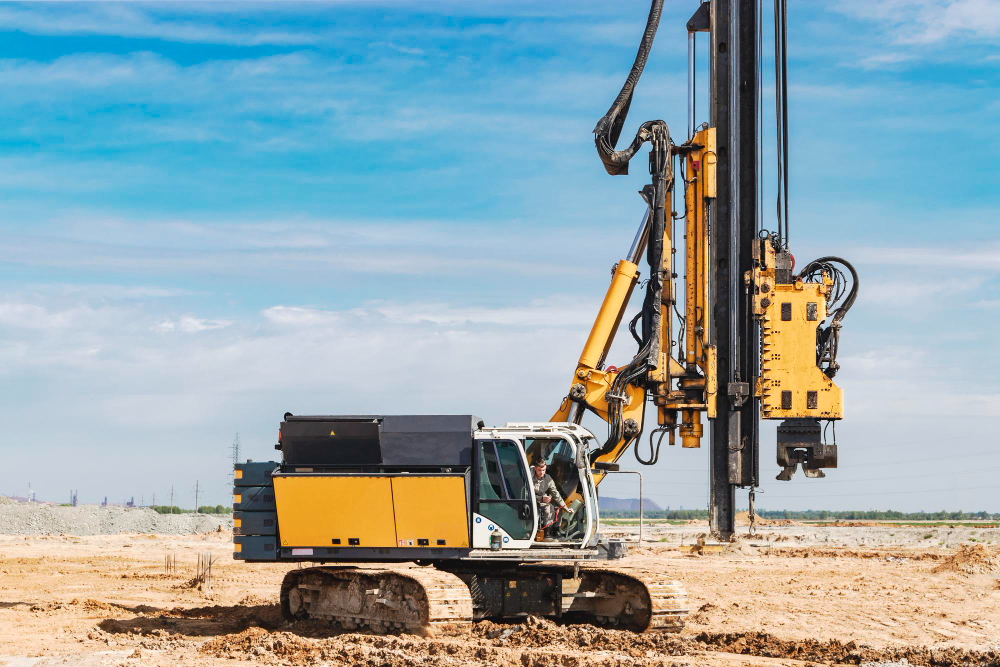Horizontal Directional Drilling (HDD) is transforming the way we handle water infrastructure. If you’ve ever wondered how a simple process can significantly improve efficiency, cost savings and environmental impact, you’re in for an enlightening read. This process has revolutionized underground boring applications with the innovation of ductile steel pipe technology. The advent of HDD for the boring pipes supplier brings an exciting and thriving market.
Water Infrastructure Revolution: The Integration Of Horizontal Directional Drilling
- Revolutionary Technique: The application of HDD in water infrastructure has paved the way for quicker, more cost-effective installations. Using the process, a pipe supplier can ensure optimal water flow, even in challenging terrains.
- Directional Accuracy: This technique allows precise direction control, enabling project workers to install the pipes without requiring extensive excavation.
- Compatibility with Ductile Steel Pipes: These pipes are particularly suitable for the HDD process due to their strength and flexibility, ensuring a durable water supply system.

Ductile Steel Pipe: The Future Of HDD
- Cost Saving & Reduced Environmental Impact: Not only does this material save construction costs, but its application via HDD also lessens ecological disruption.
- Reducing Energy Cost: Ductile steel’s properties result in energy-efficient drilling, cutting operational costs.
- Increased Pipe Size: This material’s versatility allows for varied pipe sizes, enhancing flow capacity.
- Coefficient Thermal Expansion: Its predictable thermal behavior ensures performance stability across different temperature ranges.
Precision Planning: Tailoring The Drill Profile To Project’s Unique Parameters
- Pipe Entry & Exit Angles: Optimizing these angles ensures proper alignment and minimizes stress on the pipe.
- Horizontal Drill Length: It must be determined considering geological conditions and project requirements.
- Depth Under Barrier: Adequate depth safeguards against surface disturbances and structural integrity.
Crafting Success With Ductile Pipes: Essential Pre-Usage Guidelines
Selecting the right boring pipes supplier and proper planning are essential. Here’s what to consider:
Pre-Construction Phase: A Detailed Breakdown
The pre-construction phase is vital when planning a project involving Horizontal Directional Drilling (HDD).
Preliminary Studies: Understanding the Terrain
Preliminary studies form the foundation of every HDD project. These are the essential steps involved:
Subsurface Explorations
- Purpose: To analyze the geological composition beneath the surface.
- Process: Various methods are employed to understand soil types, rock formations and potential underground obstacles.
Locating Existing Utilities and Structures
- Importance: To avoid conflicts with current infrastructure like water, gas lines or existing structures.
- Procedure: Utilizing advanced locating equipment and careful mapping to identify these existing entities.
General Inventory of Landscape and Vegetation
- Objective: To ascertain the present landscape and vegetation along the proposed route.
- Action: A detailed survey, identifying trees, shrubs and landscape features and assessing the potential impact on them.
Legal Acquisitions: Ensuring Compliance
Legal acquisitions are crucial to prevent legal hindrances during construction.
Right-of-Way and Permits
- Definition: The permits refer to legal rights to access and use specific land or pathways.
- Acquisition: Obtaining the necessary permissions from authorities or private property owners.
Permits for Tree and Shrub Removal
- Requirement: To lawfully remove or trim trees and shrubs affecting the construction path.
- Process: Seeking the required permits following local environmental regulations.
Environmental Permits
- Necessity: To ensure the construction complies with all environmental standards and regulations.
- Obtaining Process: Coordinating with environmental agencies and fulfilling all criteria to secure the needed permits.
Public Relations: Building Relationships
Maintaining transparent public relations is key to a smooth construction process:
Keeping Property Owners Informed
- Goal: Ensuring nearby property owners know the project’s details.
- Means: Regular updates through meetings, newsletters or dedicated community liaison officers.
Managing Materials and Equipment Storage
- Objective: Determining the locations for storing materials and equipment.
- Considerations: Selecting sites that minimize inconvenience to the public, adhering to safety regulations and considering aesthetics.
The Comprehensive Guide To HDD: A Four-Step Process
Horizontal Directional Drilling (HDD) is a complex and highly specialized process. Understanding each phase is vital for construction industry professionals, especially when dealing with pipe suppliers.
STEP 1: Drilling the Pilot Hole – The Precision Beginning
- The Setup: Proper placement and configuration of the HDD equipment.
- Creating the Pilot Hole: An initial borehole, utilizing a pilot bit, is created, typically 4 inches in diameter.
- Selection of Drill Heads: Specific steerable drill heads are chosen depending on the soil type.
- Navigation Methods: Using either walk-over or wire-line type navigation for precise drilling.
STEP 2: Pre-Reaming – Expanding the Possibilities
- The Process: Pre-reaming is about enlarging the pilot hole to the correct size.
- Progressive Enlargement: It might require multiple passes with increasingly larger reamers to reach the desired drill path size.
STEP 3: Establishing the Drill Path Diameter – Finding the Perfect Fit
- Final Diameter Calculation: Generally, the final drill path diameter should be 1.5 times larger than the pipe’s largest outside diameter.
- Preparation for Pipe Installation: Once the proper diameter is achieved, it sets the stage for the pipe installation.
STEP 4: Installing Ductile Steel Pipe – The Culmination
- The Pull-Back Method: Installation undergoes a process that pulls back the product pipe from the drill rig.
- Utilizing Drilling Fluid: A drilling fluid helps reduce friction during the pull-back process.
- Reamer and Swivel Use: A rotating reamer keeps the drill path clear and a swivel attaches the reamer to the product pipe.
Procuring Ductile Pipes: Secure Quality From A Trusted Boring Pipes Supplier
- Market Research: Understanding the available boring pipes suppliers and their reputations.
- Criteria Definition: Setting your quality standards, budget constraints and timeline.
- Shortlisting Suppliers: Based on your defined criteria, narrowing down potential suppliers.
- Initial Communication: Establishing contact and expressing your requirements and expectations.
- Meetings and Discussions: Engaging in detailed discussions about product quality, delivery timelines and costs.
- Reference Checking: Speaking with previous clients to gauge their satisfaction with the supplier.
Explore Your Path To Modern Infrastructure
The technology and materials you choose lay the foundation for success in construction. With Bigfoot Pipe & Piling, your trusted boring pipes supplier, embrace the future of construction through ductile steel pipes and horizontal directional drilling. Reach out to us and take the decisive step toward a sustainable and innovative construction solution.
